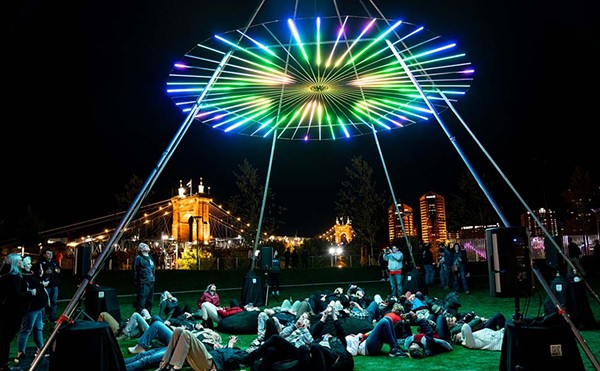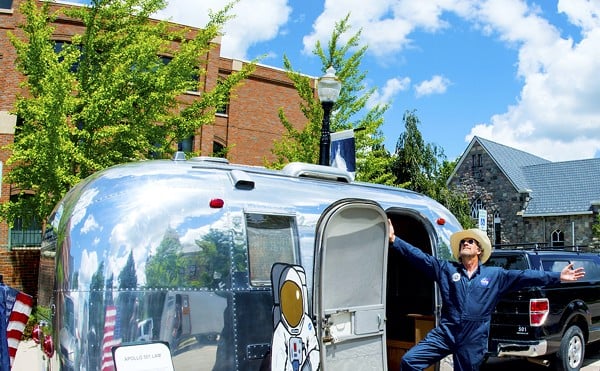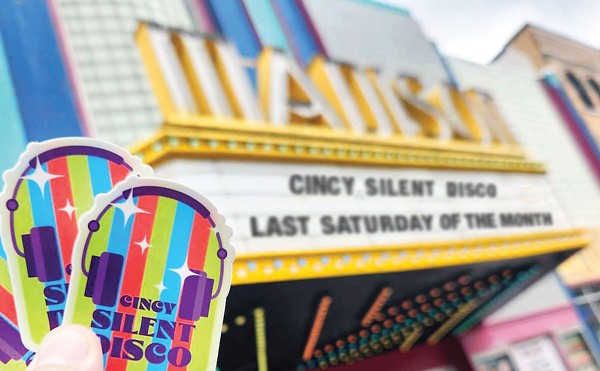On June 13, 1971, The New York Times published excerpts from the Pentagon Papers, a top-secret Department of Defense study that revealed the U.S. government had been lying about our involvement in the Vietnam War. Among the many damning revelations was that, according to the Papers, 70 percent of the reason for our continued engagement in Vietnam was “to avoid a humiliating U.S. defeat.”
Daniel Ellsberg, a former Marine and defense department staffer who worked on the Papers, could no longer perpetuate the lie, so he leaked the document to The Times in an effort to stop what he deemed an unjust war that was killing thousands of innocent people every month.
Co-directors Judith Ehrlich and Rick Goldsmith’s surprisingly gripping, Oscar-nominated documentary The Most Dangerous Man in America reexamines the events that led Ellsberg to come forward — a decision that would ultimately lead to our withdrawal from Vietnam after the resignation of then-President Richard Nixon and affirm the media’s vital role as governmental watchdogs.
CityBeat recently connected with Goldsmith to discuss a film whose various issues still resonate today.
CityBeat: Why were you interested in retelling the story of the Pentagon Papers?
Rick Goldsmith: We started the project in 2004-05. The parallels and contrasts with today were unmistakable. We were involved in two wars, at least one of which we’d been lied into — much like the Gulf of Tonkin incident was falsified and manipulated by LBJ. Much of the country was against the wars, especially Iraq, but both the Congress and the people seemed either unwilling or unable to stop them.
During the Pentagon Papers era there was much outspokenness and activism, people acting according to conscience to risk their own freedom to help stop the war. In contrast, in our current state, neither the Congress nor the people, nor the press demonstrated the courage and risk it would take to save lives and end the wars. Our story had much to say to America when we started. Unfortunately for the country, with the escalation of the war in Afghanistan, the film still has all-too-much relevance in 2010.
CB: Why did you decide to have Ellsberg narrate the film?
RG: It was a process. Our second editor, Lawrence Lerew, introduced the idea of Ellsberg as narrator. (Co-director) Judy (Ehrlich) was for it from the start, but I was reluctant at first because I was concerned we might lose not so much objectivity but believability. But as the editing unfolded, I saw first that the other interviewees were very strong and, along with the Nixon aides and the Nixon tapes, added many diverse points of view that didn’t allow Ellsberg’s first-person narrative to overwhelm. Also, Ellsberg’s story was so intimate and so internal that to have him narrate seemed to make the story more personal and gripping and, in the end, more effective. And he turned out to be a very good narrator — his delivery was rich of voice, urgent and dramatic.
CB: You employ a raft of vintage footage and audio clips. How did you go about deciding what to use and what to excise from the final film?
RG: We had over 100 hours of archival footage — the selection of related footage from 35-40 years ago was immense and much of it very compelling. There were dozens of conversations on the secret White House Nixon audiotapes about Ellsberg and the Pentagon Papers and The New York Times. Basically, we used the archival footage and audio that helped tell our story and helped augment what our interviewees said in their interviews or that filled in important historical events, like the Gulf of Tonkin incident, the Rolling Thunder bombing campaign and the 1968 Tet offensive.
Some pieces were thrilling discoveries, and we knew immediately we would use them, like correspondent Peter Arnett’s description of Ellsberg the civilian marching like a Marine with troops through rice paddies and encountering Viet Cong in 1965 and the piece from ABC news that captured the exact scene Ellsberg had described in an interview with us of McNamara stepping off a plane and telling reporters the exact opposite, a blatant lie, of what he had just told Ellsberg on the plane about the prospects of the U.S. winning the war. There is Ellsberg walking off the plane right behind McNamara, and there is McNamara, lying through his teeth just like Ellsberg had said.
The Nixon tapes were a gold mine, and we could easily have used twice as much of them as we used. We felt we needed to exercise some restraint there, otherwise the shock and black humor gleaned from the tapes would overtake our story.
CB: You also re-create some of the events via various cinematic techniques. What was the thinking behind that decision?
RG: We wanted to use all the tricks in the documentarian’s toolbox to tell a gripping story. When re-creation was called for, we figured out a good way to do re-creation. We had a couple of humorous stories recalled by our subjects, and animation seemed a good way to go to enhance the humor. Our sound designer Jim LeBrecht creatively enhanced the soundtrack, even putting a bomber-like track behind scenes of the Xerox machine to connect the Pentagon Papers with what the Papers were about — the war and killing and mass destruction.
CB: Though not overtly stated, the film clearly parallels events going on in our country today. Why didn’t you delve into the parallels in a more overt way?
RG: From the start, we knew instinctively that the parallels in any case would be all-too-apparent and to make the parallels directly would only weaken the narrative. Arthur Miller’s 1953 play The Crucible took place 300 years earlier during the Salem Witch Trials, but everyone knew the play was really about the anti-communist “witch hunts” of that time, the era of McCarthyism. Our audiences, even — or especially — young people who were all born long after the Vietnam War ended, all knew that they were watching a film that’s not about the past but about the present.
CB: Though the film ultimately comes off as sympathetic to Ellsberg’s cause, it’s by no means a one-sided polemic. Why was keeping that balance important to you?
RG: I don’t think a polemic is good storytelling, and if it isn’t good storytelling you will lose your audience. You want to engage people every step of the way with questions, questions you hope they ask themselves: Would I take a risk like this to stop a great wrong? Have I done so when I was asked to do something that violated my moral values? Would I choose to pursue a great cause if it meant hurting or even betraying a close friend or colleague? Would I advise my wife or husband to risk life in prison when I had the chance to tell him not to and thus ensure we would be together instead of one of us behind bars?
CB: The Nixon audiotapes are a fascinating glimpse into his thinking at the time, and they allow him to become a much more visceral character in the story you’re telling. But one question remains: Why didn’t he destroy them?
RG: So many people ask that question. At the time Nixon was taping himself and his aides, he no doubt didn’t think he was saying or doing anything wrong. I think the conversations we hear in this film — while rough and at times shocking — this is likely very representative of the way men of power speak behind closed doors. They talk tough to each other macho, and think nothing of it: “Using a nuclear bomb? Does that bother you, Henry (Kissinger)? I want you to think big, for christsakes!”
Once existence of the tapes were revealed to the nation by Alexander Butterfield, after the Watergate scandal had been exposed and Nixon was on the hot seat, now that is a tougher question to answer — i.e. why didn’t Nixon destroy the tapes? Perhaps he still felt there would be nothing so bad that they would incriminate him. But remember that mysterious 18 -minute gap supposedly erased by mistake by Nixon’s secretary, Rosemary Woods? Maybe that was indeed erased on purpose because it was so incriminating.
CB: How was the Oscar experience?
RG: Terrific, a lot of fun. The celebrity scene is so surreal on one level, but there is no doubt that it’s exciting. There is a feeling that you’re at the center of the universe, and you are for that brief time, the weekend of March 7, when a billion people will be watching the event you’re participating in. So it’s very cool, even while you understand that it doesn’t really mean anything to be there — other than the honor and recognition of a work well done — that all the meaning in your life and in the world exists outside of, and apart from, that spectacle.
CB: What surprised you the most about the experience — whether about the story’s facts or the production itself — of putting this film together?
RG: What moved me the most was that everyone involved in the production — not only our own crew and team but also the 20-plus people we interviewed on camera — was so engaged and enthusiastic about the telling of this story. For those we interviewed who had lived this episode in history, their feeling about their involvement and about Dan was intense, and that was palpable throughout.
Also that Daniel Ellsberg himself opened up to us about a very personal and controversial episode in his own life. He hardly knew us when we started, and he took a risk opening up to us, not knowing what we would do with the material. For that I’m grateful, because without that openness from Dan and from his wife Patricia we wouldn’t really have had a film.
THE MOST DANGEROUS MAN IN AMERICA opens March 19 at the Esquire Theatre. Read Jason Gargano's review of the film here.





